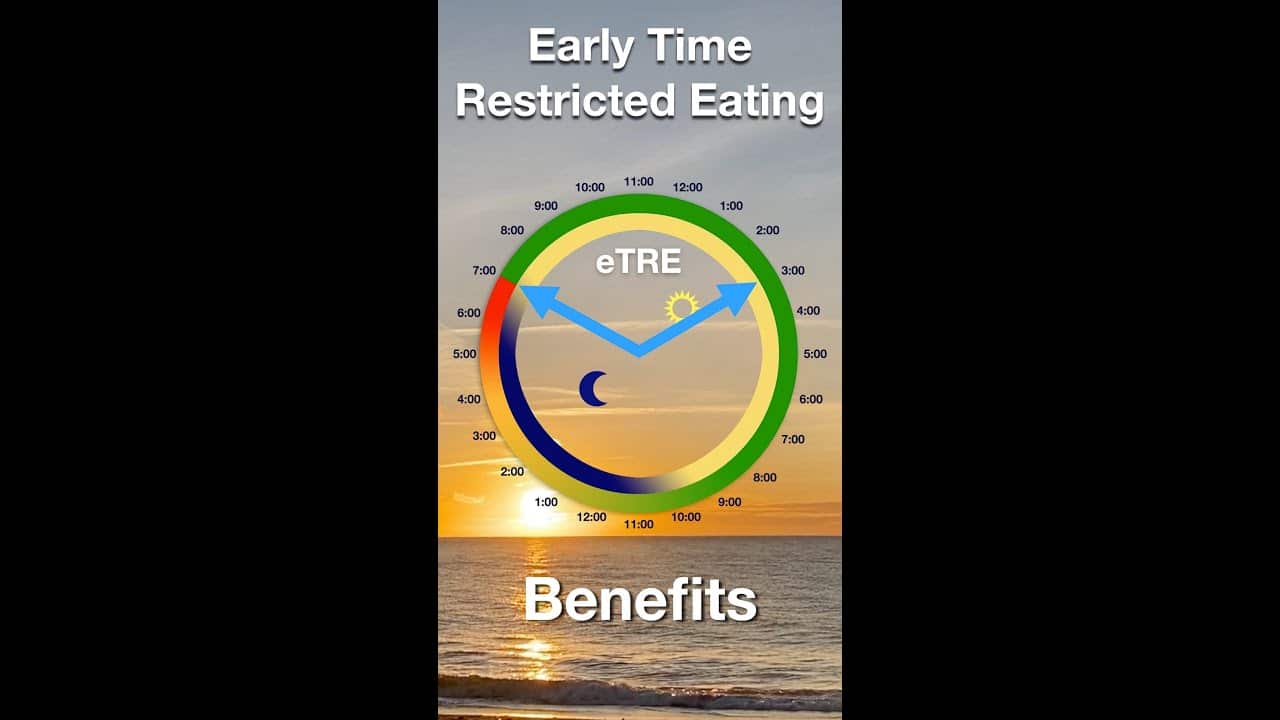*****
Summary of Transcript:
The video is about the benefits of one meal a day (OMAD) and how limiting the eating window to one hour a day is unnecessary to see positive results. OMAD is recommended for people with obesity, cardiovascular illness, and metabolic syndrome at any age. A study lasting 14 weeks with 90 individuals aged 25 to 75 found that eating only during an 8-hour window between 7 am and 3 pm resulted in weight loss, reduction in body fat, insulin resistance, and blood glucose levels, as well as improvements in mood, fatigue, and hunger. Reducing the eating window to one to two hours daily may benefit autophagy.
*****
Summary of Description:
The author recommends One Meal A Day (OMAD) for its health, fitness, mental acuity, and mood benefits. However, some people complain about adapting to what they perceive as an extreme regimen. For those suffering from obesity, cardiovascular illness, and metabolic syndrome, an 8-hour eating window is a good place to start. A study published in “Obesity” found that reducing the eating window to 8 hours resulted in weight loss, a reduction in body fat, insulin resistance, glucose levels, and improvements in mood, fatigue, and anger. Further reducing the eating window to 1-2 hours may add benefits.
*****
The Benefits of OMAD
Introduction
Eating only one meal daily (OMAD) has been gaining popularity. Despite its growing popularity, many individuals find it challenging to adjust to the practice of eating once a day. While some may consider OMAD a strenuous regimen, a new study shows that you can enjoy the benefits of OMAD with as little as an eight-hour eating window.
The Study
The research article published in the “Obesity” journal in December 2021 shows that restricting eating to an eight-hour window helps to promote weight loss. The study had 90 individuals aged 25 to 75 participating in it. These individuals practiced OMAD for 14 weeks. They were only allowed to eat between 7 am and 3 pm, which gave them an eight-hour eating window. After the study’s conclusion, the participants experienced significant improvements in their weight, glucose levels, and insulin resistance.
Benefits of an Eight-Hour Eating Window
One of the benefits of an eight-hour eating window is a reduction in body weight. Individuals who practice OMAD within an eight-hour window experience weight loss benefits. Additionally, this study showed reduced body fat for those who practiced OMAD within an eight-hour window.
Another significant benefit of an eight-hour eating window is reducing insulin resistance and glucose levels. When you eat continuously throughout the day, your blood sugar levels rise, which causes an increase in insulin production. Long periods of insulin production lead to insulin resistance, a condition where your body cannot respond to the insulin being produced. As a result, your body produces more insulin, leading to high blood sugar levels.
It is, therefore, essential to regulate what you eat and how much you eat within a particular window to avoid putting your body through this process. Practicing OMAD within an eight-hour window gives your body time to rest and regulate your glucose levels, ultimately reducing insulin resistance levels.
Aside from the physical benefits of OMAD, individuals who follow this practice report significant improvements in their mood, fatigue, and anger levels. An eight-hour eating window has been shown to give individuals more alertness during the day, improving their mental acuity and overall well-being.
Autophagy Benefits
Autophagy is the process by which your body naturally clears out damaged cells and regenerates new cells. When you eat, your body focuses most of its resources on digestion, which leaves little time for other crucial functions like cell regeneration.
By following an OMAD regimen with a shorter eating window of one to two hours, you can enjoy various autophagy benefits. While an eight-hour window is a great start for individuals new to OMAD or those with existing health conditions, a shorter eating window may benefit more advanced OMAD practitioners and those looking to experience the full health benefits of this eating regimen.
Conclusion
OMAD is a challenging eating regimen to adapt to for many individuals, but the results speak for themselves. Through OMAD, individuals can enjoy significant weight loss, reduced insulin resistance and glucose levels, and improved mood and energy levels. The study conducted in the “Obesity” journal showed promising results of an eight-hour eating window, which makes it easier for more individuals to follow the OMAD regimen. While adjustments to your eating regimen can be difficult, it may be worth the effort to reap the benefits of OMAD in the long run.
*****
Source Description
After 13 years in OMAD, I strongly recommend it for health, fitness, mental acuity, and mood. However, I often hear complaints about adapting to what they see as an extreme regimen.
A paper published on December 14th in the research journal “Obesity” reported a study lasting 14 weeks conducted in 90 individuals ages 25 to 75.
You do not have to limit your eating window to 1 hr a day to see benefits. Subjects eating only during an 8 hr window (between 7 am and 3 pm) experienced the following:
Body Weight loss. Reduction in body fat. Reduction in insulin resistance and Glucose levels. But they also experienced improvements in mood, fatigue, and anger.
Further, reducing your eating window to 1-2 hours may add to the benefits of autophagy. However, the 8 hr window is a great start for people with obesity, cardiovascular illness, and metabolic syndrome at any age.
For more on my 13-year history on OMAD, subscribe to this channel.


Comments are closed